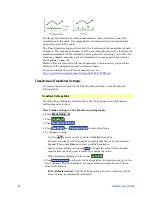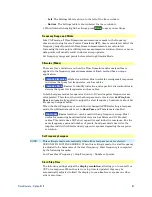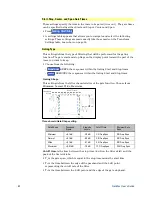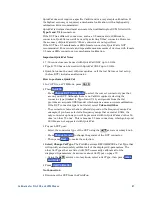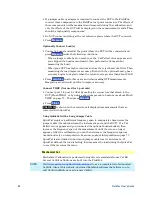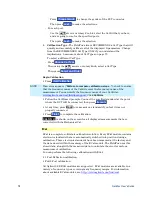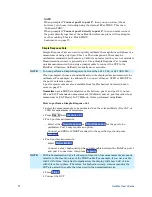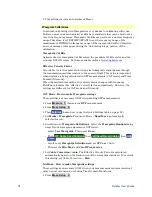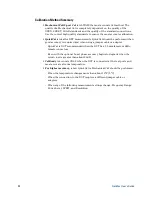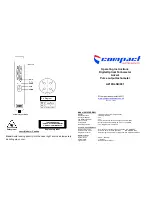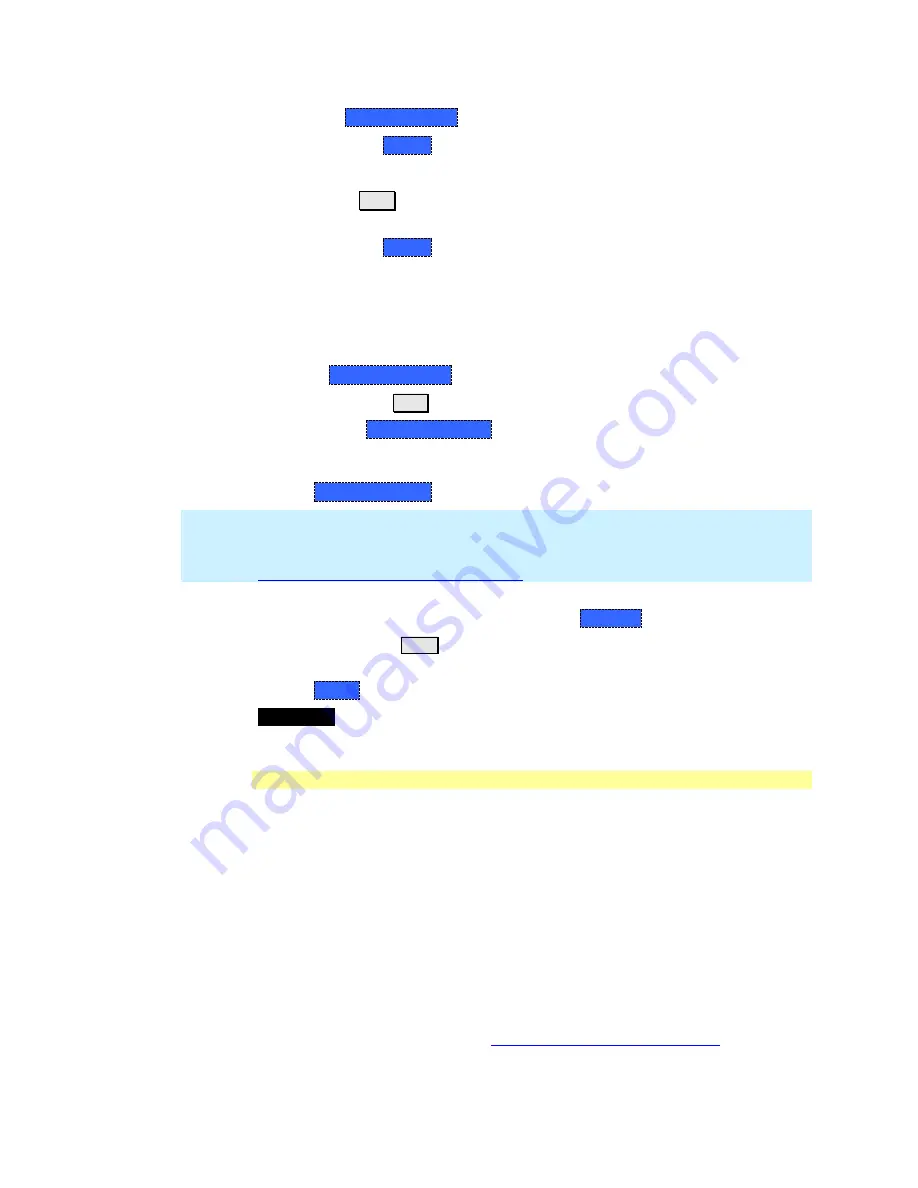
70
FieldFox User’s Guide
o
Press
Change Gender
to change the gender of the DUT connector.
o
Then press
Next…
to make the selections.
o
For each port:
o
Use the
▲|▼
arrows or rotary knob to select the Cal Kit that you have,
and are going to use, for the specified ports.
o
Then press
Next…
to make the selection.
4.
Calibration Type
- The FieldFox always RECOMMENDS a Cal Type that will
quickly and accurately calibrate all of the displayed S-parameters. Change
from the RECOMMENDED Cal Type ONLY if you understand the
implications. Learn more about Cal Types on page 73.
To select a different Cal Type:
o
Press
Change Cal Type
.
o
Then using the
▲|▼
arrows or rotary knob, select a
Cal Type,
o
Then press
Select and Finish
.
Begin Calibration
Press
Start Calibration
.
NOTE
If an error appears (“
Failure to compute calibration steps
…”), check to ensure
that the frequency range of the Cal Kit covers the frequency range of the
measurement. You can verify the frequency range of your Cal Kit at:
www.agilent.com/find/fieldfoxsupport,
Click
Cal Kits
.
Follow the Cal Wizard prompts. Connect the specified standard at the point
where the DUT will be connected, then press
Measure
.
At any time, press
Back
to re-measure a standard if you feel it was not
properly connected.
Press
Finish
to complete the calibration.
CAL ON U
is shown on the screen for all displayed measurements that are
corrected with the Mechanical Cal.
ECal
ECal is a complete solid-state calibration solution. Every ECal module contains
electronic standards that are automatically switched into position during a
calibration. These electronic standards have been measured at the factory and
the data stored within the memory of the ECal module. The FieldFox uses this
stored data, along with the measured data, to calculate the error terms for a
measurement calibration.
You can perform the following calibrations with ECal:
1-Port Reflection calibration
Full 2-Port calibration
All Agilent USB ECal modules are supported. ECal modules are available in a
variety of connector types, covering many frequency ranges. For information
about available ECal modules, see

